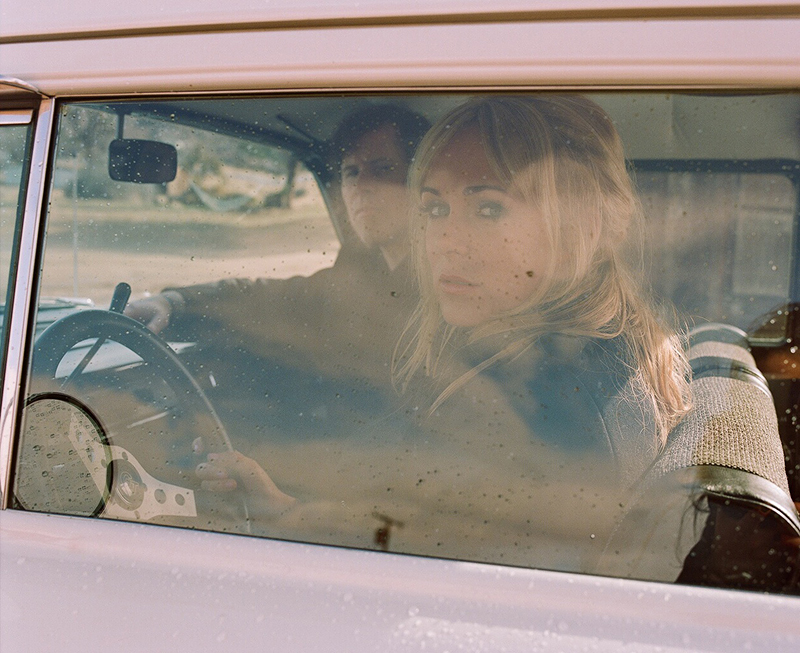The transformation of Icelandic quartet Amiina from the backing string section for revered countrymen Sigur Rós—a position they’ve held since 1999, and which has brought them their greatest fame to date—to an artistic entity in its own right began by happenstance in 2004.
“We got invited to play this festival in Denmark at the last minute, before we were even a band,” Hildur Ársælsdóttir recounts in her thick accent. “We had 10 days to come up with a program, so we just put every instrument we could find in our cars and drove out to the countryside and started fooling around, wrote some songs, and then had our first concert. We just got right onstage before we had even decided what kind of music we wanted to make, really.”
Since then, Amiina have discovered and refined a magical and monumentally beautiful style that’s informed by classical music, traditional Icelandic folk music, and the minimalist electronic experimentalism of Brian Eno and Steve Reich. Mostly, their songs unfurl slowly and gently, with arriving layers of organ, strings, xylophone, ambient drones and noises, the occasional pitter-patter beat, the sparest of guitar arpeggios, and other instrumentation forming a gossamer symphony of sound. At some points, the scope and mood are similar to Sigur Rós’ more serene, ruminative moments; elsewhere, Amiina project a sort of innocence and warmth that’s akin to early Boards of Canada.
Having studied the violin since childhood, the late-twentysomething Ársælsdóttir says she never anticipated becoming a part of the indie-rock universe. “Growing up, my goal was always to play in an orchestra, maybe teach, or play chamber music and stuff. I think it was like that for all of us,” she notes, referring to Amiina bandmates Edda Rún Ólafsdóttir, María Huld Markan Sigfúsdóttir, and Sólrún Sumarlidadóttir (the four met and began playing together at the Reykjavík College of Music in the mid-’90s). “After I graduated, I played in the Iceland Symphony Orchestra for a year, but it just wasn’t enough for me; it wasn’t creative enough.”
So in the late ’90s, Amiina began doing session work in earnest for Icelandic artists of all stripes. “That’s how we got out of classical music and into this world, just doing that to make some extra money. We thought of it more as work, but then when we met Sigur Rós, right from the first it felt really right.”
Indeed, Amiina quickly became a vital element in Sigur Rós’ epic, ethereal space-rock, and were treated not as hired guns but as members of the band both live and in the studio. “When they were making the brackets record [Sigur Rós’ untitled 2002 album] we were touring with them, and the songs were written in sound checks, so we played along and came up with things and they didn’t tell us what to do or anything,” Ársælsdóttir recalls. “Then after touring with them for such a long time, we were thinking that when we got the time, how nice it would be to make our own music.”
Recording a handful of the songs they’d come up with for that festival in Denmark, Amiina released a debut EP, AnimanimA, at the end of 2004. The foursome continued touring with Sigur Rós, doubling as an opening act, and spent the next two years—whenever their hectic schedule would permit—working on their first full-length album, Kurr. (Though it will get worldwide distribution in June, the group is selling self-pressed copies of the disc at shows on this tour.)
Live, Amiina’s stage setup and demeanor don’t exactly resemble a traditional classical music performance. In addition to violins, violas, and cellos, the quartet has more than 30 instruments at its disposal—everything from keyboards, harmonium, harps, guitars, and a toothless saw (bowed for a thereminlike effect) to a table stocked with laptops, samplers, bells, chimes, hand-cranked music boxes, and even tuned wine glasses. There are vocals, too, although they’re mostly wordless melodies—the one or two songs with actual lyrics are sung in Icelandic. And though the four often display the studiousness and intensity of well-trained musicians, when they glide around the stage midsong, changing instruments, they appear almost like grade-schoolers let loose in a music-room wonderland.
And when Amiina’s music envelopes you, it’s often a moving, transcendent experience. “A lot of people do say they’ve shed some tears during our show, and sometimes they come up to us afterward crying a little bit,” says Ársælsdóttir. Admitting to a general shyness, she adds that those moments still aren’t all that awkward or embarrassing. “It’s really great that we can touch their emotions like that. That’s what music’s supposed to do.”









